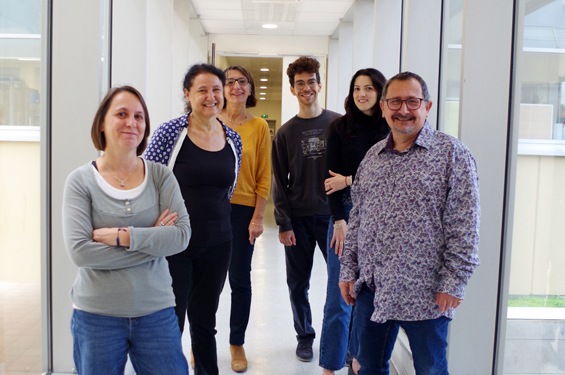The research group has a longstanding record of elucidating the pathophysiology of temporal lobe epilepsy (TLE), one of the most common forms of focal epilepsy in adults. In the epileptic hippocampus, dentate granule cells (DGCs) form new recurrent synapses. The team discovered that these synapses are not only aberrantly localized but also operate through a glutamatergic receptor subtype—kainate receptors (KARs)—that is absent under naïve conditions.
Over the past decade, our work has examined how ectopic KARs affect neuronal coding and drive seizure generation in DGCs in animal models of TLE. We first showed that ectopic KARs play a central role in TLE by profoundly altering neuronal coding properties and excitability. In close collaboration with Christophe Mulle, we demonstrated that ectopic KARs containing the GluK2 subunit are instrumental in precipitating recurrent seizures, thereby establishing GluK2 as a promising therapeutic target for drug‑resistant epilepsy.
Building on this foundation, we initiated a strategic maturation phase in partnership with INSERM Transfert, SATT Aquitaine, and Kurma Partners to develop a proof-of-concept gene therapy strategy targeting GluK2 in the hippocampus. This collaborative effort culminated in the establishment of Corlieve Therapeutics, co-founded with Christophe Mulle and bringing together academic partners (INSERM via INSERM Transfert, and CNRS via SATT Aquitaine) alongside industrial partners (Kurma Partners, Regenxbio, Eurazeo, Pureos Bioventures, and Bpifrance)
See Valérie Crépel, Prix Innovation 2022 and Corlieve Therapeutics rachetée par la biotech uniQure : un transfert réussi.
Following Corlieve’s acquisition by uniQure, the development of the AMT-260 drug candidate was accelerated and has now advanced to a Phase I/IIa clinical trial – see more
Selected references at the bottom of the page
Collaborators
INMED
Dr. J.C. Platel
Dr. A. Represa
Dr. R. Cossart
EXTERNAL
Dr. C. Mulle – Institut des Neurosciences, Bordeaux
Pr. F. Bartolomei – Hopital Timone, Marseille
Pr. D. Scavarda – Hopital Timone, Marseille
Alumni
L. Goirand-Lopez (PhD)
A. Vigier (PhD)
S. Ho (PhD)
C. Pléaux (PhD)
D. Ouedraogo (PhD)
J. Artinian (PhD)
J. Epsztein (PhD)
P. Congar (PhD)
G Bonetto (Postdoc)
A. Peret (Pos-doc)
L. Christie (Postdoc)
E. Sola (Postdoc)
M. Goldin (Postdoc)
)
Join our team !
Our team has open positions for master students, PhD students and post-docs. Please send your application by email to Valérie Crépel








